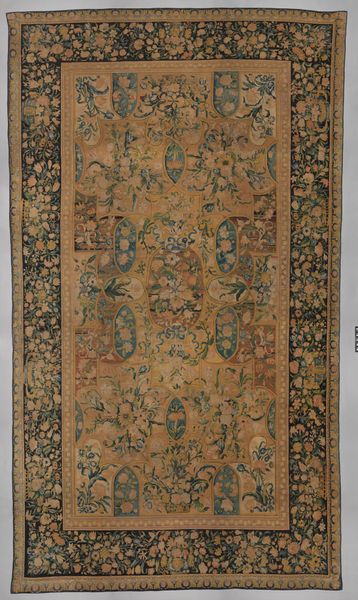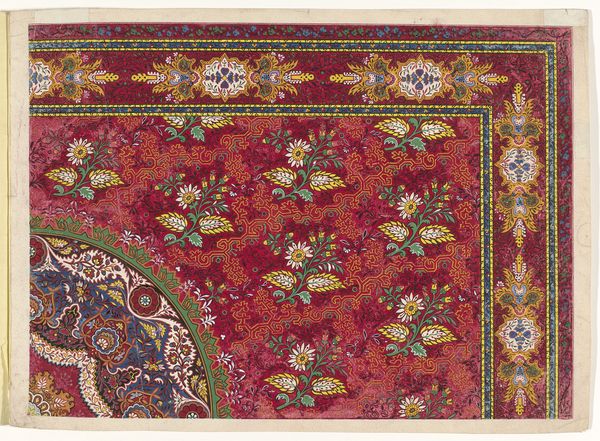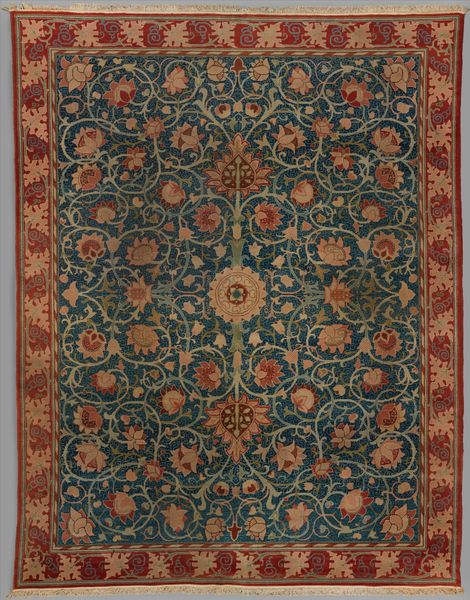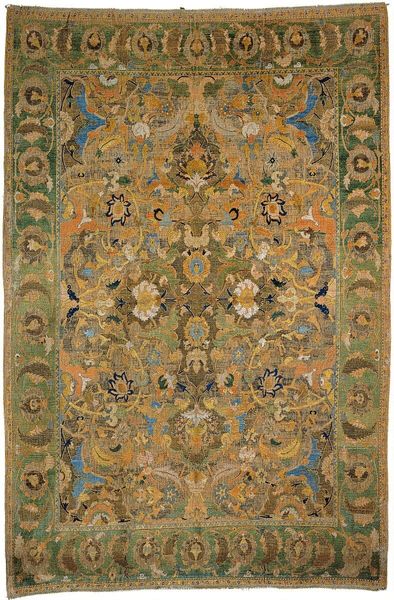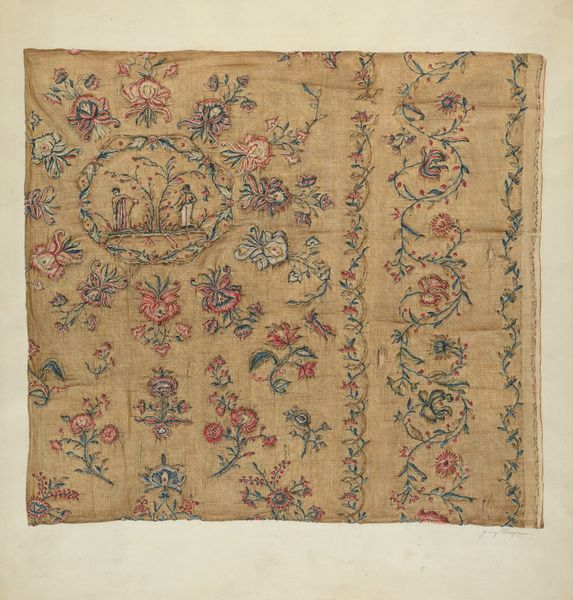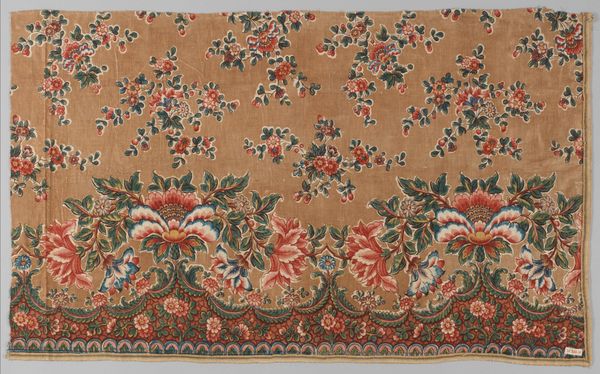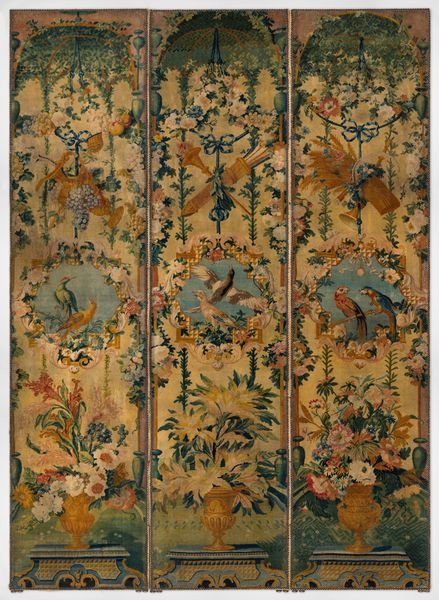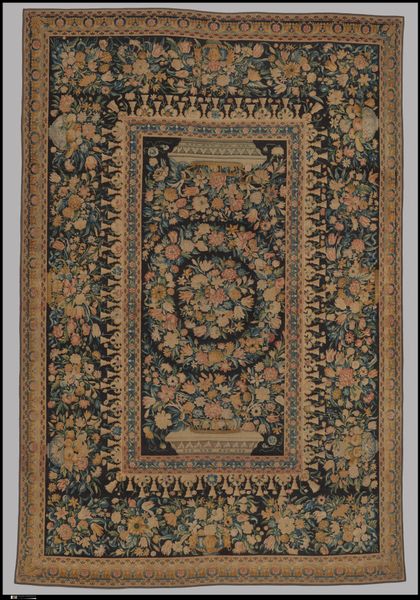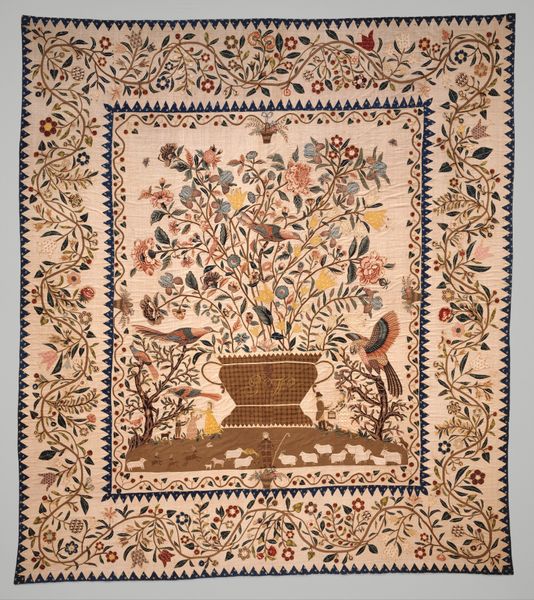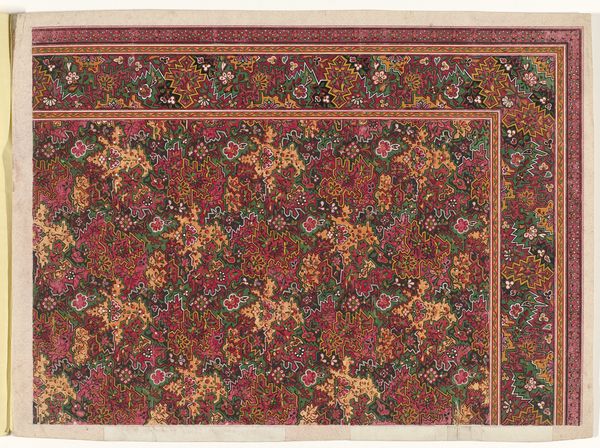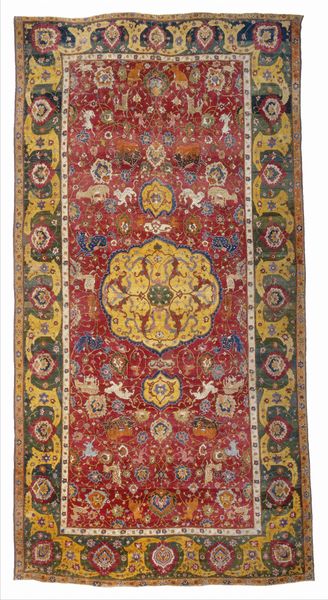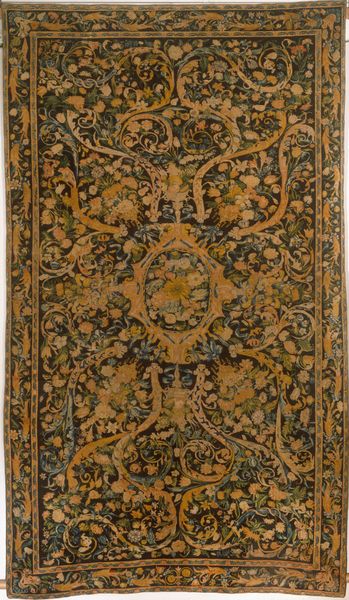
painting, weaving, textile
#
painting
#
weaving
#
landscape
#
textile
#
folk-art
#
romanticism
#
decorative-art
Dimensions: L. 87 x W. 73 inches 221.0 x 185.4 cm
Copyright: Public Domain
Curator: Before us hangs "Quilt," an exquisite textile creation likely dating from between 1805 and 1820, housed here at the Metropolitan Museum. Editor: Immediately, the intricacy of the design strikes me. It's remarkably balanced, almost like a meticulously planned garden laid flat. The color palette, dominated by muted reds and greens against a cream background, is surprisingly calming. Curator: Indeed. The composition itself is quite deliberate. The central motif, a stylized tree, commands attention, flanked by intricate borders featuring the well-known paisley pattern, further adorned with geometric elements. We must appreciate that such hand-worked designs signify not just aesthetic pleasure, but skill and laborious work. Editor: Absolutely. And those paisleys - instantly recognizable, but their significance shifts across cultures. In this context, positioned alongside such a meticulously rendered tree, they add an almost exotic flair to what is otherwise a very Western sensibility. Considering this era, was this quilt meant to evoke the spice trade or international commerce in some manner? Curator: A keen observation. Textile patterns and designs served not merely as embellishment. Such pieces served as declarations of societal values, family status, or regional belonging. Given the rise of Romanticism, could the tree itself act as a symbol of a newfound awareness of nature in contrast with growing industrialization? Editor: Fascinating. So, is this "Quilt" a functional object repurposed towards an art object, or a conscious declaration meant to signify artistic values? Its relatively large scale indicates it could’ve easily served as bed covering, yet its decorative sophistication signals an object to admire from afar. Curator: A dichotomy certainly worthy of consideration. The juxtaposition between domestic function and visual complexity raises questions regarding gendered labor in this period. Editor: For me, engaging with it visually unveils further questions about cultural exchange and self-representation through ornamentation. Curator: And hopefully a similar sense of critical engagement now rests with our audience. Editor: It encourages one to consider the multiple layers of history embedded within its very threads.
Comments
No comments
Be the first to comment and join the conversation on the ultimate creative platform.

